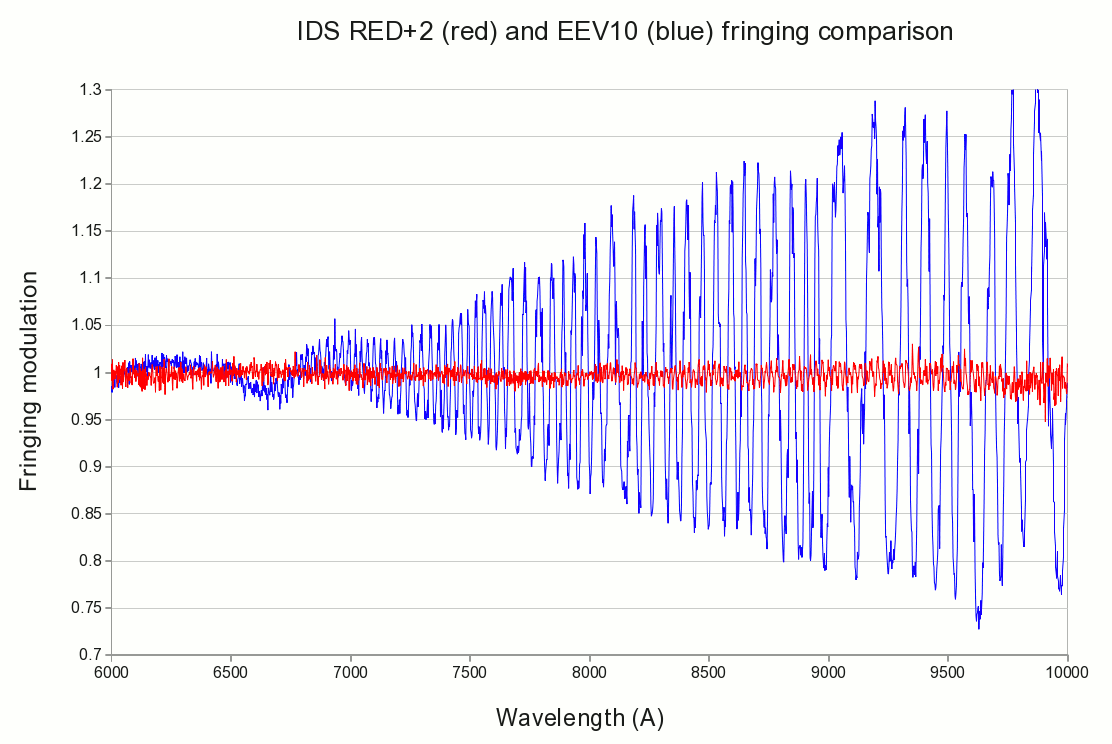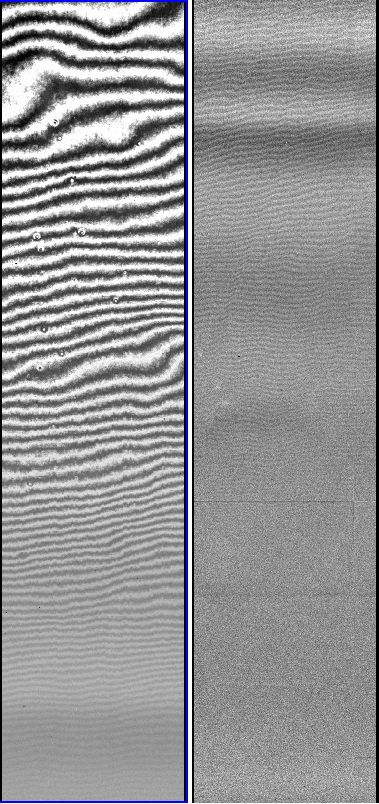 | |||
|
| Home > Astronomy > Detectors > EEV10a |
Operational Characteristics
| ||||||||||||||||||||||||||||||||||||||||||||||||||||||||||||||||||||||||||||||||||
|
|
|
|
|
|
|
|
|
|
|
|
|
|
|
|
|
Noise (ADU) |
3.5 |
2.2 |
|
|
|
|
|
|
|
|
All binning modes up to 4 x 2 have been tested in both speeds with no increase in noise.
Linearity
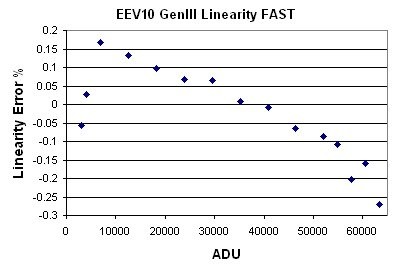
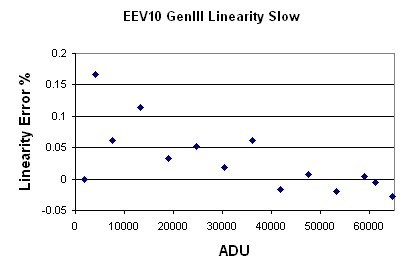
| Vertical CTE | >0.999999 |
| Horizontal CTE | >0.999999 |
Physical Characteristics
| Pixel Scale | 0.4 arcsecs/pixel on IDS235 0.19 arcsecs/pixel on ISIS Blue |
| X Pixel size | 13.5 microns |
| Y Pixel size | 13.5 microns |
| X size in pixels of digitised area | 2148 |
| Y size in pixels of digitised area | 4200 |
| X size of useful imaging area | 2048 |
| Y size of useful imaging area | 4100 |
| X start of useful imaging area | 51 |
| Y start of useful imaging area | 0 |
| LN2 capacity of cryostat | 2.5 litres |
| Cryostat window thickness | 4 mm |
| Distance from window to CCD | 10 mm |
| Cryostat window size | 36 x 66 mm |
Operational Parameters
| Operating temperature | 153K |
| Preferred amplifier | L( R provides the same performance ) |
| Anti-blooming available | no |
Measured Characteristics
Quantum Efficiency
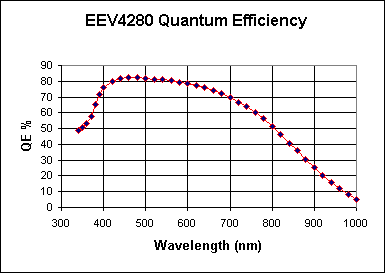
Full QE curve for EEV4280 in tabulated form,
measured at ATC March 99
| Dark current | 4 e/hour @ -120 degrees C |
| Full well bloom limit | ~150000 electrons |
| Chip flatness | Profile scan shows centre section to be flat to < 1 micron |
| Cosmetics | There are about 2ish pixel/column defects plus a cluster of single pixel defects. See dark frame. |
| Cosmic Ray count | ~2000 events/chip/hour |
Fringing. See below a graph of fringe amplitude vs wavelength for EEV10 and Red+2
|
|
Fringing. Flat field showing fringing, EEV10 on the left Red+2 on the right.
|
|
| Top | Back |
|

